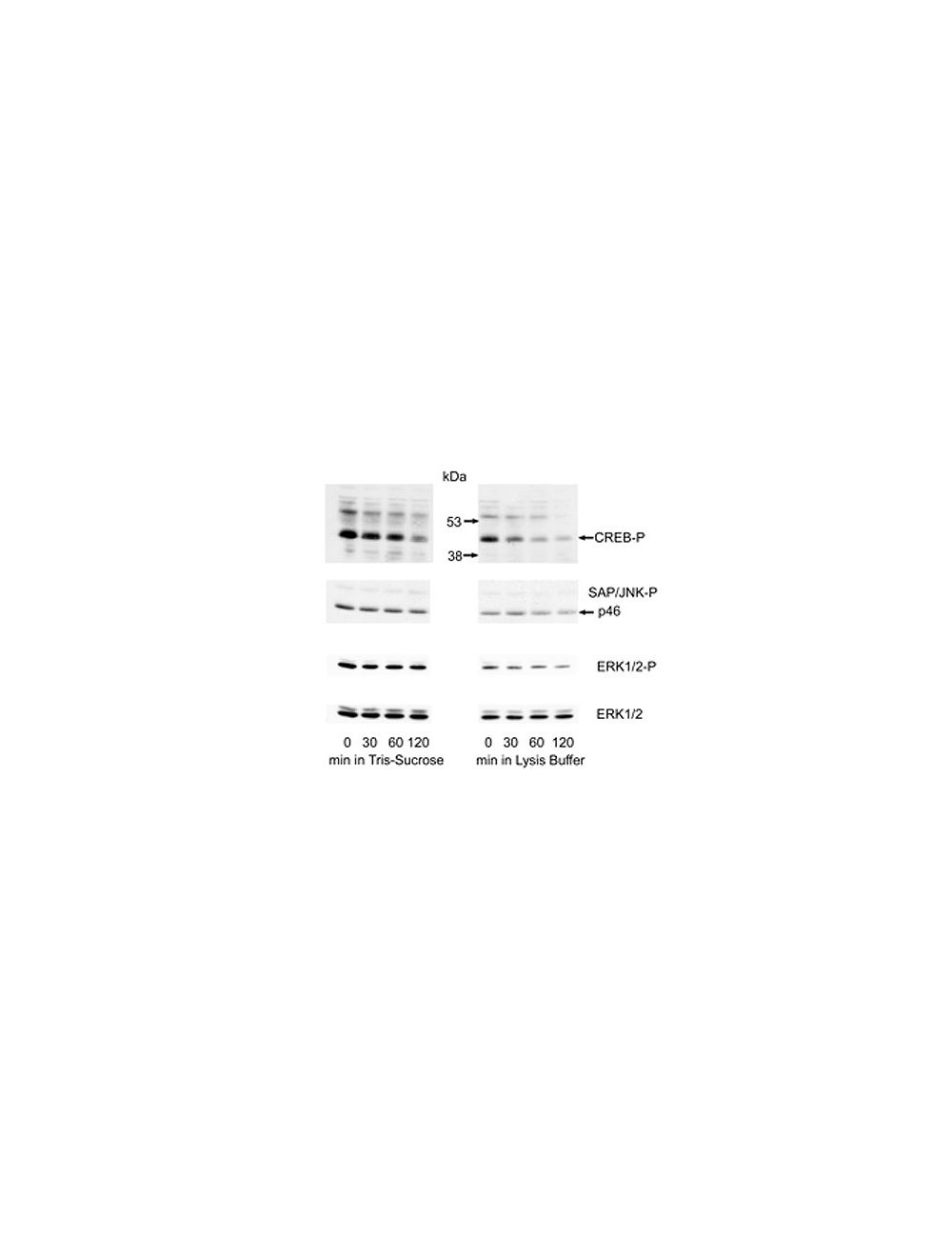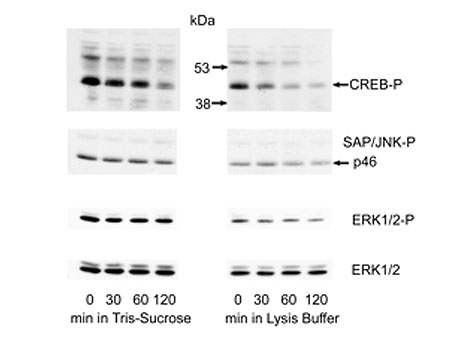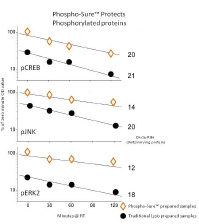Phospho-Sure RTD Neuronal Cell & Soft tissue extraction buffer
As low as
US$87.00
Only %1 left
Catalog Number
B-100
- Product Name Phospho-Sure RTD Neuronal Cell & Soft tissue extraction buffer
-
Product Description
Detergents typically present in cell lysis buffers are thought to disrupt organelles and compartments and increase the exposure of soluble phospho-proteins to phosphatases and proteases thereby resulting in uncontrolled dephosphorylation and proteolysis.
Phospho-Sure RTD Neuronal extraction buffer is optimized for the extraction of phosphorylated proteins from neuronal and other soft tissues types. The buffer extracts the phosphoproteins in a native state without the use of harsh detergents or oxidizers, and it is specially formulated to help maintain phosphoproteins and protect them from degradation better than traditional detergent based extraction buffers. - Alternative Names Phospho-sure
- Application(s) IP, WB
- Regulatory Status For research use only.
Product Info
-
Product Description
Detergents typically present in cell lysis buffers are thought to disrupt organelles and compartments and increase the exposure of soluble phospho-proteins to phosphatases and proteases thereby resulting in uncontrolled dephosphorylation and proteolysis.
Phospho-Sure RTD Neuronal extraction buffer is optimized for the extraction of phosphorylated proteins from neuronal and other soft tissues types. The buffer extracts the phosphoproteins in a native state without the use of harsh detergents or oxidizers, and it is specially formulated to help maintain phosphoproteins and protect them from degradation better than traditional detergent based extraction buffers. - Application(s) IP, WB
- Application Details Please download the protocol below for detailed instructions on how to use Phospho-Sure in neuronal and other soft tissues.
- Format Powder
- Formulation Powder containing no preservatives. Preparation of Phospho-Sure RTD is very simple. Simply add sterile ddH2O directly to the powdered solution in the supplied bottle, swirl briefly to dissolve the chemicals and use. The material contains no preservatives so sterile technique should always be used.
-
Reconstitution Instructions
Add sterile-filtered ultrapure water and mix by gently swirling. The material contains no preservatives so sterile technique should always be used. Volume to add:
B-100-PS: 93 mL to a final volume of 100 mL at 20°C.
B-200-PS: 186 mL to a final volume of 200 mL at 20°C. - Storage Instructions The dry, unopened container should be stored at room temperature in a dry or desiccated location protected from light. Do not store in the refrigerator unless material is in a dry, moisture free environment. Material is hydroscopic so once the seal is broken it should be hydrated and not resealed while dry. Once hydrated, the buffer can be stored at 2-8°C for up to 3 months. Solution can be frozen but clumping may occur upon thawing and is not recommended.
- Storage Temperature 25°C (ambient)
- Batch Number Please see item label.
- Expiration Date Powdered format can be stored up to 12 months after purchase under cool, dry conditions.
- Alternative Names Phospho-sure
- Shipping Temperature 25°C (ambient)
- UNSPSC CODE 47101613
- Regulatory Status For research use only.
Specifications
-
Specific References
1. Suneja SK, Mo Z, Potashner SJ. (2006) Phospho-CREB and other phospho-proteins: improved recovery from brain tissue. J Neurosci Methods. 2006 Jan 30;150(2):238-41.
2. Elvira Mass, Dagmar Wachten, Anna C. Aschenbrenner, Andre Voelzmann, Michael Hochemail (2014) Murine Creld1 Controls Cardiac Development through Activation of Calcineurin/NFATc1 Signaling, Developmental Cell Volume 28, Issue 6, p711-726

 1800 605-5127
1800 605-5127 +61 (0)8 8352 7711
+61 (0)8 8352 7711


